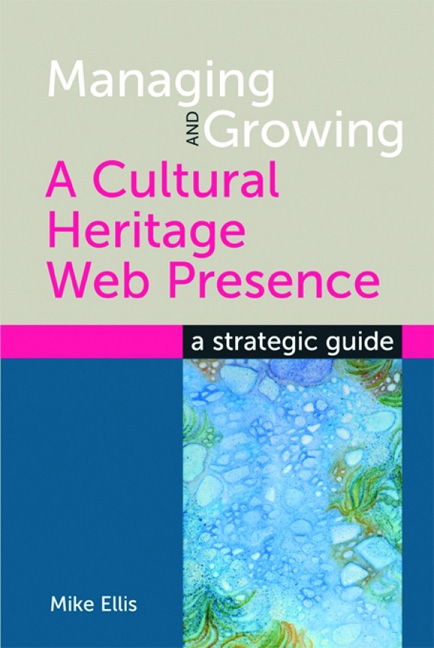Book contents
- Frontmatter
- Dedication
- Contents
- Acknowledgements
- Glossary
- Introduction
- 1 Evaluating what you have now
- 2 Building a strategic approach
- 3 Content
- 4 Marketing
- 5 Policies and guidelines
- 6 Traffic and metrics
- 7 The social web (Web 2.0)
- 8 The website project process
- 9 Away from the browser
- 10 Bringing it all together
- Bibliography
- Index
2 - Building a strategic approach
Published online by Cambridge University Press: 08 June 2018
- Frontmatter
- Dedication
- Contents
- Acknowledgements
- Glossary
- Introduction
- 1 Evaluating what you have now
- 2 Building a strategic approach
- 3 Content
- 4 Marketing
- 5 Policies and guidelines
- 6 Traffic and metrics
- 7 The social web (Web 2.0)
- 8 The website project process
- 9 Away from the browser
- 10 Bringing it all together
- Bibliography
- Index
Summary
Introduction
In the previous chapter we considered two main themes: firstly, how people use the web as they go about their daily lives and secondly, how your organization is positioned in terms of technology, content, metrics and so on. Now that we've got this background information in place, let's start thinking about how to be more strategic with our thinking.
When you work in a busy, content-rich and resource-poor environment such as a cultural heritage institution, it is all too easy to become reactive. Everything needs doing now, or yesterday, or last week. Your inbox is full, as is your head. The last thing you probably want to do is take some time out from the coalface in order to ‘think bigger-picture'.
Unfortunately, this is exactly what is required by strategic thinking. Hopefully, if you're putting in the time to read this book, you've already recognized that a reactive approach is rarely the route to either sanity or excellence, and will be prepared to invest some more time into planning.
The benefits of working more strategically are both short and long term. From a short-term perspective, you'll find that having answers to hand when they're asked for by people like your stakeholders saves you a huge amount of time. From a long-term perspective, you'll find similar time savings when you're thinking about how to respond to the myriad incoming projects and ‘Can you put this on the web?' requests – the ones that are probably right now sitting in your inbox!
More importantly, having a long-term approach will ensure that what you do online is relevant to both your audience and to your organization. You should hopefully find that a strong web strategy also gives you the means to demonstrate success – whatever your particular definition of ‘success' is – and to then build and grow your online presence into the future.
A good strategy, embedded well across an organization, gives people momentum and a shared intellectual framework with which to move forward collectively.
You'll also see that a good approach is to align your online strategy with your institutional strategy: by doing this you not only build on work that has already been done but hopefully also demonstrate how the web can be a powerful adjunct to what your organization does already.
- Type
- Chapter
- Information
- Managing and Growing a Cultural Heritage Web PresenceA strategic guide, pp. 21 - 40Publisher: FacetPrint publication year: 2011



